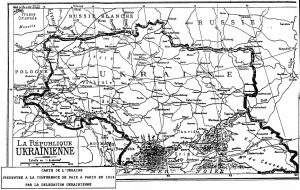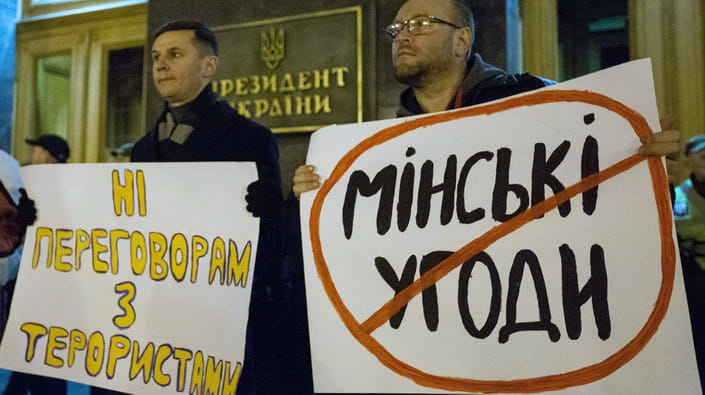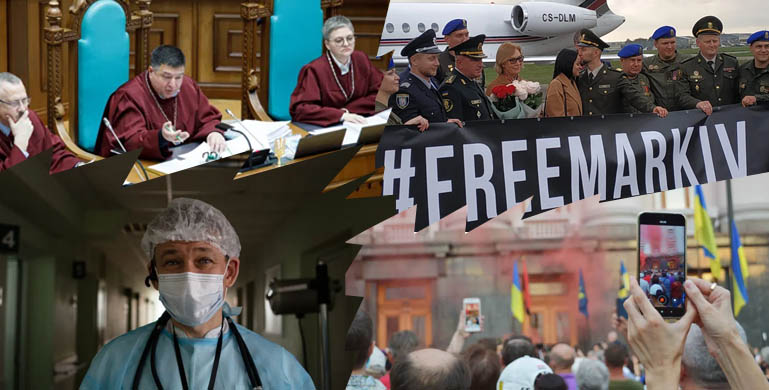In his lecture "Ukrainian history as world history: 1917-2017" delivered at the Institute for Human Sciences in Vienna on 13 October 2017, historian Timothy Snyder states, "What I have found in my own work is that Ukrainian history is a kind of gift to global history, that Ukrainian history in many ways is a missing link that makes certain trends in global history make more sense."
- Ukraine's failure to establish a nation-state after the First World War was actually typical of the European interwar national states, which all lasted for under 20 years.
- From the perspective of Ukraine, the aspirations and the consequences of the neo-Imperial policies by Nazi Germany and the USSR come clearest.
- If the true purpose of the EU is to rescue post-imperial states, then the Maidan Revolution makes perfect sense.
Ukraine between two neo-empires
It was Ukraine that was the linchpin in the creation of the USSR and it was Ukraine that was most problematic for the USSR. And both German and Russian neo-empires needed Ukraine, "the breadbasket of Europe."
Ukraine is where the policies of Germany and Russia, the two neo-empires of the 1930’s-1940’s, coincided. To succeed, Germany and Russia both needed to have control of the grain stocks in Ukraine and to take possession of Ukraine’s fertile black earth.“If you are a Soviet state builder, Ukraine is the major national problem that you are confronted with in the 1920’s,” states Professor Timothy Snyder. “If you are Stalin…Ukraine is a critical - if not the critical - place of revolution, where collectivization will fail or succeed,” Snyder goes on.
For Ukraine, the encounter with the two new empires was especially disastrous. An estimated “3 to 4 million people starved between 1932-1933… another 3 million were killed during the German occupation of whom more than half were Jews, and another 3 million or so inhabitants of Soviet Ukraine died as Red Army soldiers. There is no event of this scale in any other country in the world,” Snyder claims. Ukrainians paid “a terrible, terrible price.”
Nation-states in Europe
The most important accident of European history in the 20th century, according to Snyder, is that the European land empires - Russian, German, Austro-Hungarian - collapsed after the First World War, while the maritime empires - French, British, Dutch, Spanish, Portuguese - survived the WWI, but they broke up after the Second World War.
The short existence of the post-imperial nation-states in Europe was a rule.
“History is…a horizontal process in which there are connections that we see if we look horizontally…rather than just looking up and down a national narrative,” he continues.Snyder posits that “nation states can challenge an empire, they can even bring down an empire but they are incapable of providing an automatic replacement.”
Ukraine and EU
Professor Snyder thinks that the most interesting achievement of the European Union is that it manages to bring together post-imperial states. In that sense, the European Union is not really the settlement to the Second World War as it is believed. The EU is the settlement to WWI because what it does is brings the doomed nation-states created after the First World War together with the states that were still maritime empires after the WWI.
If the European Union is to survive, it must continue to “rescue [new] states…. once it stops rescuing states it will also stop rescuing the states that are its members.”“Global history only makes sense if we’re able to look both at Europe and beyond Europe at the same time…the convenient division between Europe and beyond Europe actually prevents us from seeing the things that are essential to Europe itself…to Europe’s great peril at this particular moment… Ukraine is so intensely typical, it is the place that allows us to see the general phenomenon whether it’s nations or empires, whether it’s the creation of new empires in Europe or whether it’s a European rescue of a nation-state,” told Snyder.
From the point of view of Russia, “the war in Ukraine is just a part of a larger anti-European turn…if you’re Moscow and you’ve drawn the conclusion that you can’t join Europe…then Europe can’t be allowed to exist in its present form. If Europe rescued other nation states [by incorporating them into the European Union - Ed] so that they are richer and freer than your state, that cannot be allowed to continue.”
Read also: War against Ukraine is part of Russian policy to break EU apart, says historian Timothy Snyder
Read also:
- War against Ukraine is part of Russian policy to break EU apart, says historian Timothy Snyder
- History as a weapon in Russia’s war on Ukraine
- History, Identity and Holodomor Denial: Russia’s continued assault on Ukraine
- Timothy Snyder: Yes to security in Europe
- Nazi dreams of an enslaved Ukraine: the blind spot of Germany’s historical memory – Timothy Snyder
- Timothy Snyder: Ukraine is but one aspect of a much larger strategy that threatens European order
- Memory of the Great Patriotic war in Russia’s expansionist policy







